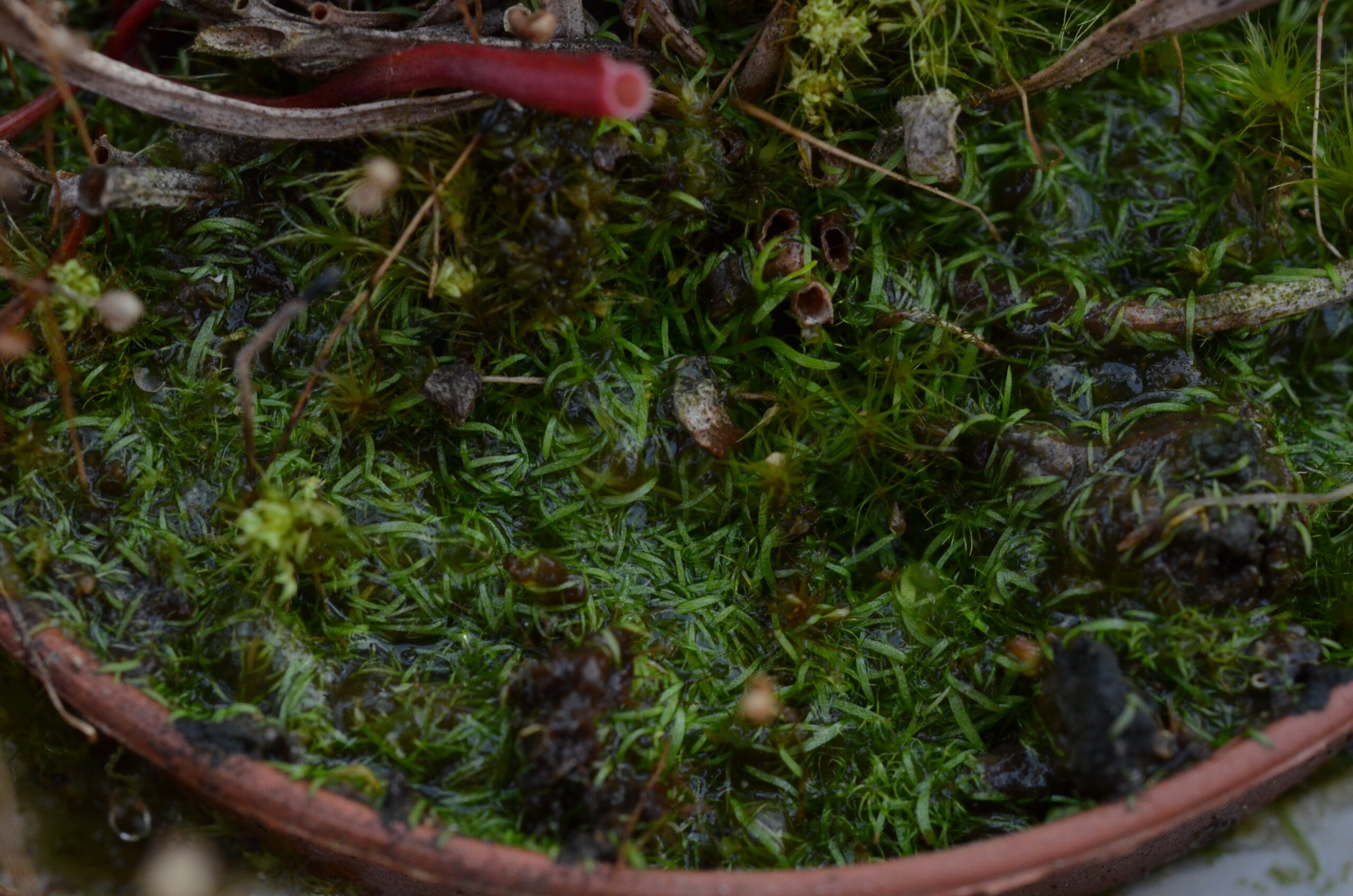Utricularia subulata:
The Carnivorous Plant Most Feared by Collectors
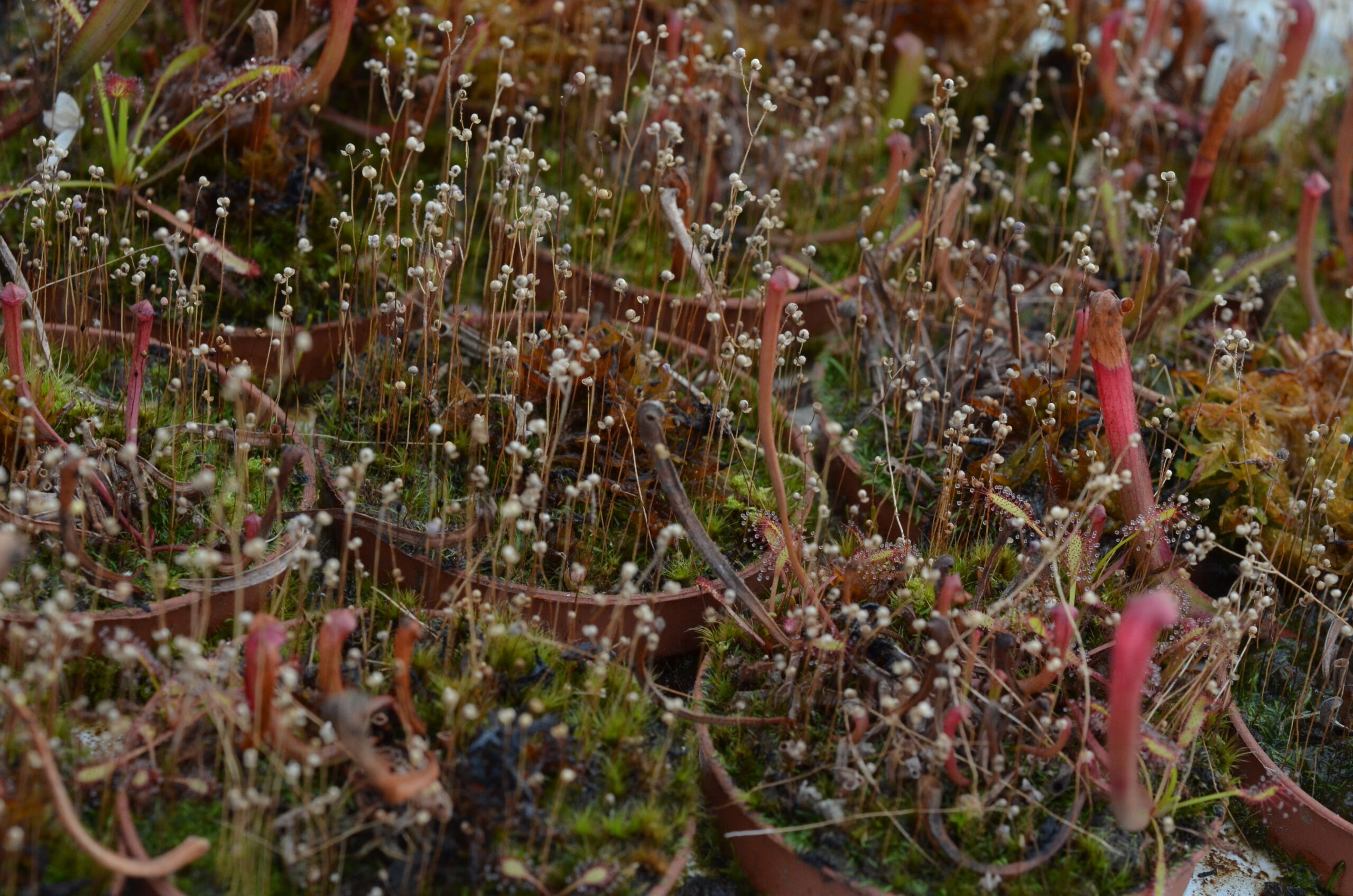
Author and Photo: Luca Parolin
Reading Time: 6 min
In the vast and fascinating world of carnivorous plants, some species captivate us with their rarity, others with their incredibly sophisticated trapping mechanisms, and still others… for their ability to take over an entire collection in a matter of weeks. This is precisely the case with Utricularia subulata, arguably the most dreaded “carnivorous weed” among growers and collectors of Drosera, Dionaea, and the like. But to understand why this little plant is such a hot topic, we need to start at the very beginning: What is Utricularia, and what makes it so unique?
The Surprising World of Utricularia
Utricularia is currently the largest known genus of carnivorous plants, belonging to the Lentibulariaceae family, alongside the genera Genlisea and Pinguicula. There are between 120 and 220 species, distributed across all continents except Antarctica, with a particular concentration in tropical areas.
The feature that makes Utricularia unmistakable is their suction trap system, called bladders (or utricles). These microscopic vesicles function like tiny vacuum pumps: when prey, such as a protozoan or aquatic larva, brushes against the sensitive hairs at the entrance of the bladder, the trap opens instantly, sucking in the water and the prey in a fraction of a second. It’s a true evolutionary masterpiece, likely the fastest and most sophisticated trapping system in the plant kingdom.
These traps can develop on all vegetative parts of the plant – even on stolons and photosynthetic structures – and are present in all species of the genus, whether aquatic, terrestrial, or epiphytic
Utricularia are plants with highly modified forms: they possess no true roots, nor a clear distinction between leaves and stems. This peculiar organization has made their classification difficult and often controversial.
From a phylogenetic standpoint, Utricularia and other Lentibulariaceae were previously grouped with the Scrophulariaceae. However, more recent genetic studies – particularly APG system analyses – have reclassified them within the Lamiales order, though they maintain an isolated position within the group due to their unique evolutionary characteristics.
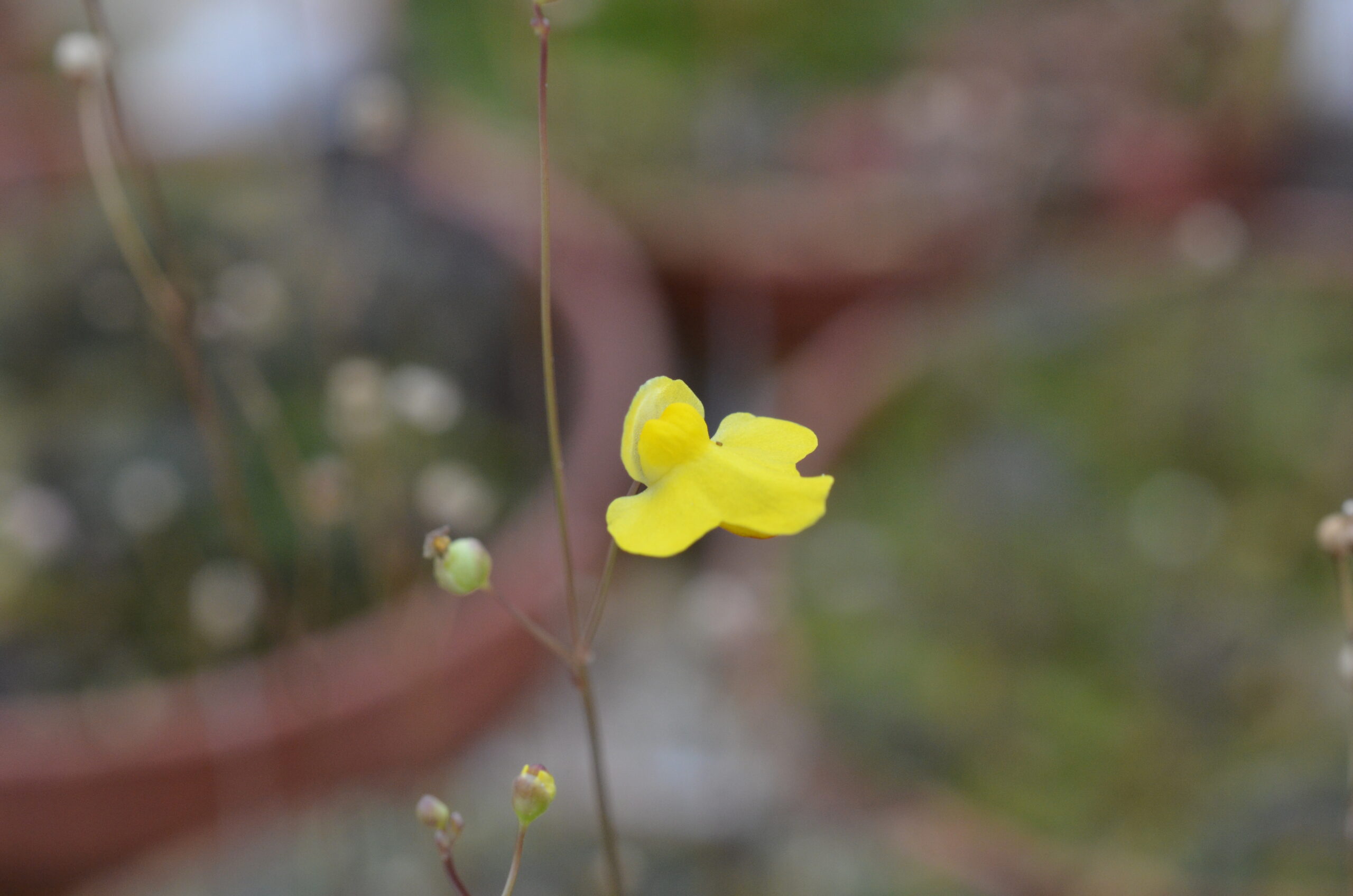
Utricularia subulata: A Small (But Very) Invasive Plant
Utricularia subulata, described by Linnaeus in 1753, is the most widespread species in the genus and has a pantropical distribution: it can be found throughout the Americas (from southern Canada to Argentina), in tropical Africa and Madagascar, in Southeast Asia (Assam, Thailand, Malaysia, Borneo), and even in northern Australia.
It’s a very small annual herbaceous plant – rarely exceeding 20 cm in height – that thrives in humid, peaty environments, even in very shallow or temporarily flooded substrates. It prefers poor, acidic, often sandy soils and is extremely adaptable.
The vegetative part develops beneath the soil surface through zigzagging underground stolons, from which small linear leaves and stalked bladders about 0.2–0.5 mm in diameter emerge. These stolons are responsible for its invasiveness: in cultivation, they can rapidly expand, colonizing entire pots and even sneaking into neighboring ones.
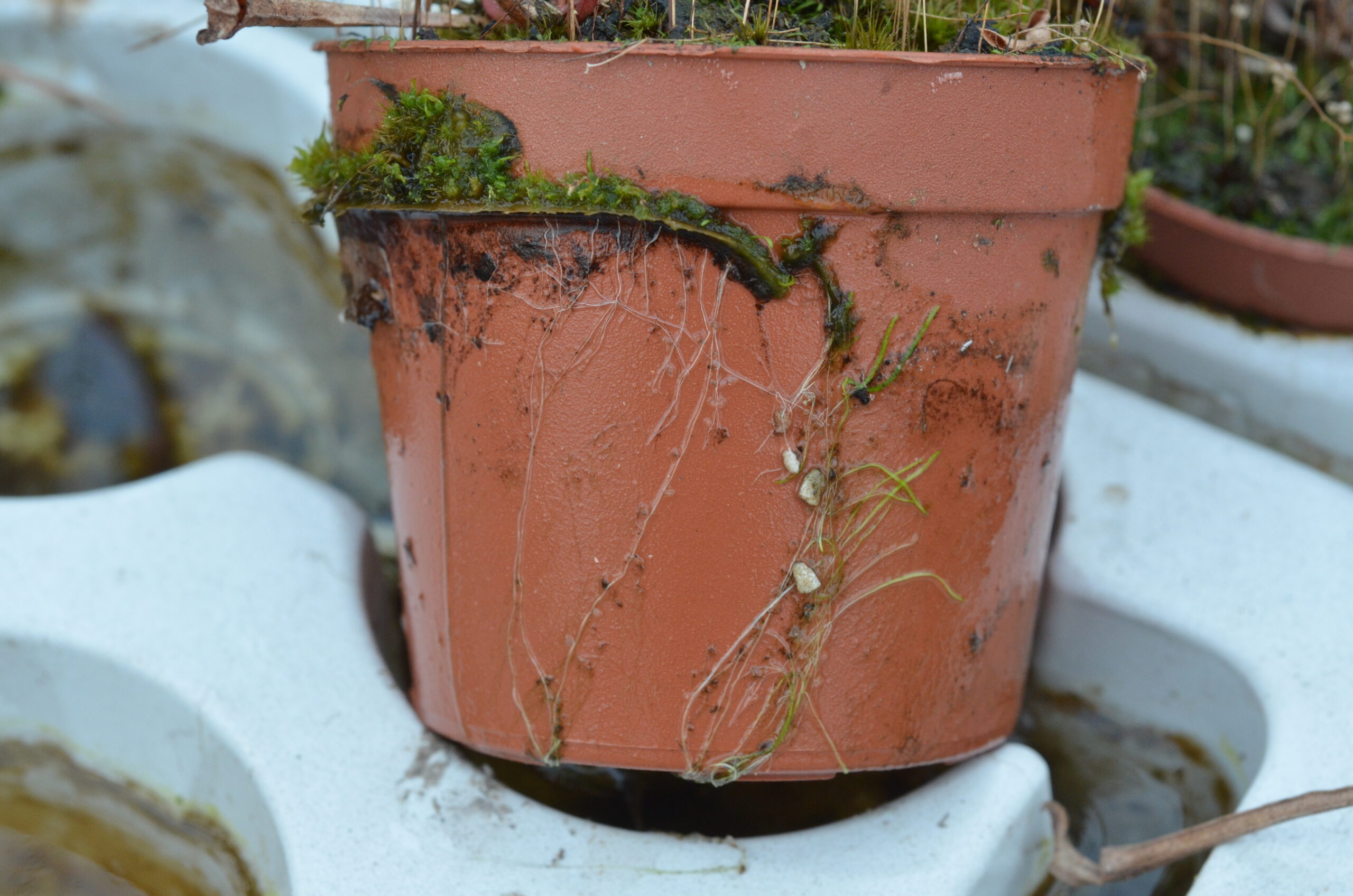
The (Almost) Invisible Flower: Cleistogamy and Reproduction
One of the most peculiar – and problematic – characteristics of Utricularia subulata is its remarkably effective reproduction. The plant can reproduce sexually, through open flowers (chasmogamous), or through cleistogamous flowers, which are closed and self-pollinate without ever opening.
These flowers, less than 5 mm long, develop even in unfavorable environmental conditions, allowing the plant to produce large quantities of tiny, dust-like seeds that are easily dispersed by wind (anemochory). This mechanism ensures rapid and continuous reproduction for the plant, often throughout the year.
In temperate climates, the plant forms underground buds to survive winter and flowers towards late summer, while in subtropical areas like Florida, it can flower as early as January.
While energy-efficient, cleistogamy limits the genetic diversity of the species. However, in populations distributed over vast areas – as is the case with U. subulata – the presence of chasmogamous flowers has also been observed, allowing for entomophilous pollination, especially by small insects like bees or midges. Some researchers suspect the existence of as-yet-undescribed taxa, or even cryptic species forms, closely linked to cleistogamy.
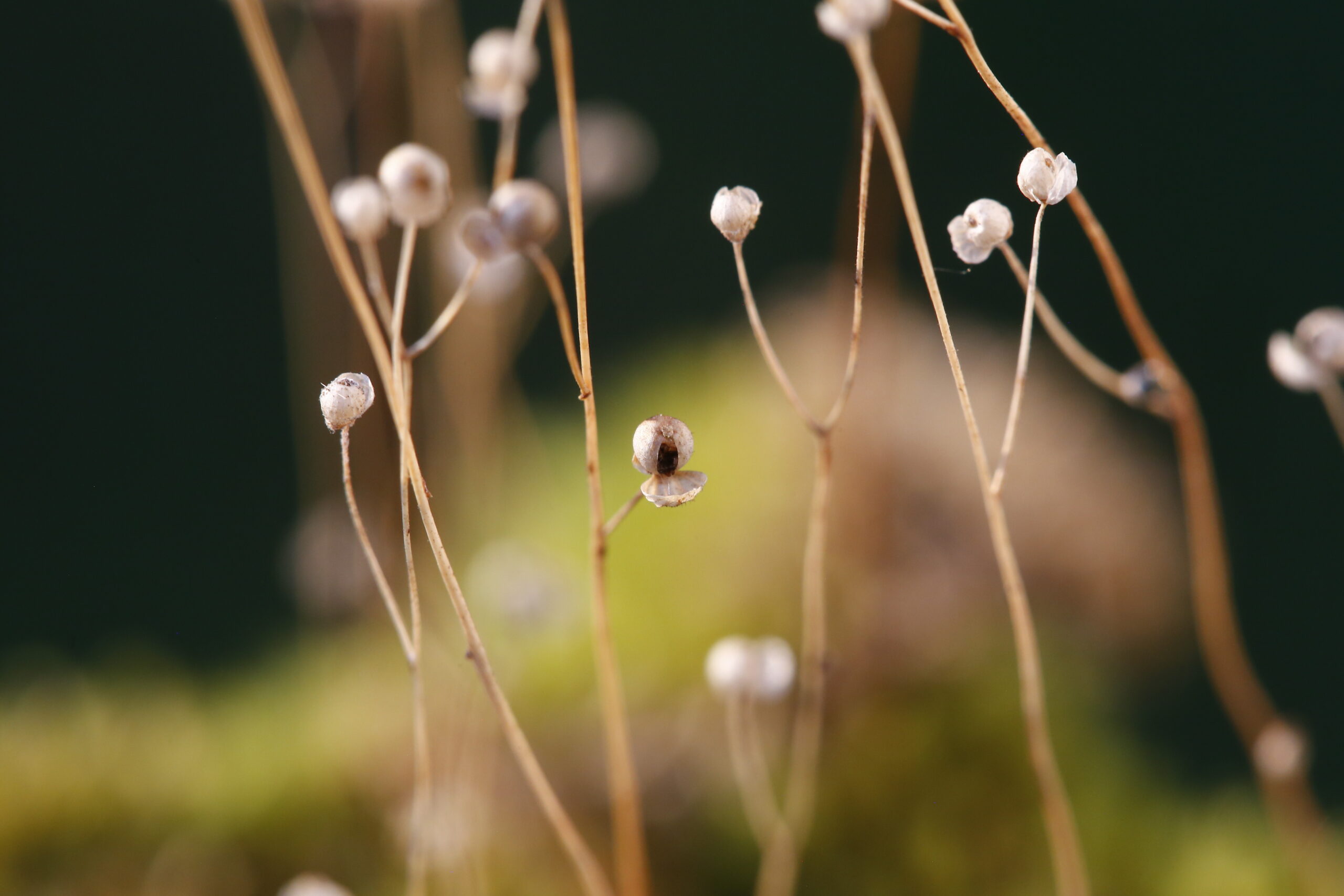
A Silent Threat in Cultivation
So, why is Utricularia subulata so feared by carnivorous plant collectors?
The problem lies in its weedy nature. Its minuscule size, its ability to reproduce through invisible seeds, and its expanding underground stolons make this plant extremely difficult to eradicate once it has established itself in a pot.
Many growers report the sudden appearance of small yellow inflorescences among their Drosera or Dionaea plants, only to discover too late that the plant has already colonized the substrate. Once present, the only truly effective solution is to remove all the soil and sterilize the pot. Some growers even avoid keeping this plant in their collection for fear that its seeds might spread to other species.
Paradoxically, Utricularia subulata isn’t aggressive towards other carnivorous plants: it doesn’t compete for nutrients, it doesn’t have a root system that draws away resources, and it doesn’t produce allelopathic substances. However, its rapid and invisible development, combined with the massive production of cleistogamous seeds, makes it a true unwelcome guest in pots of rare or sensitive plants.
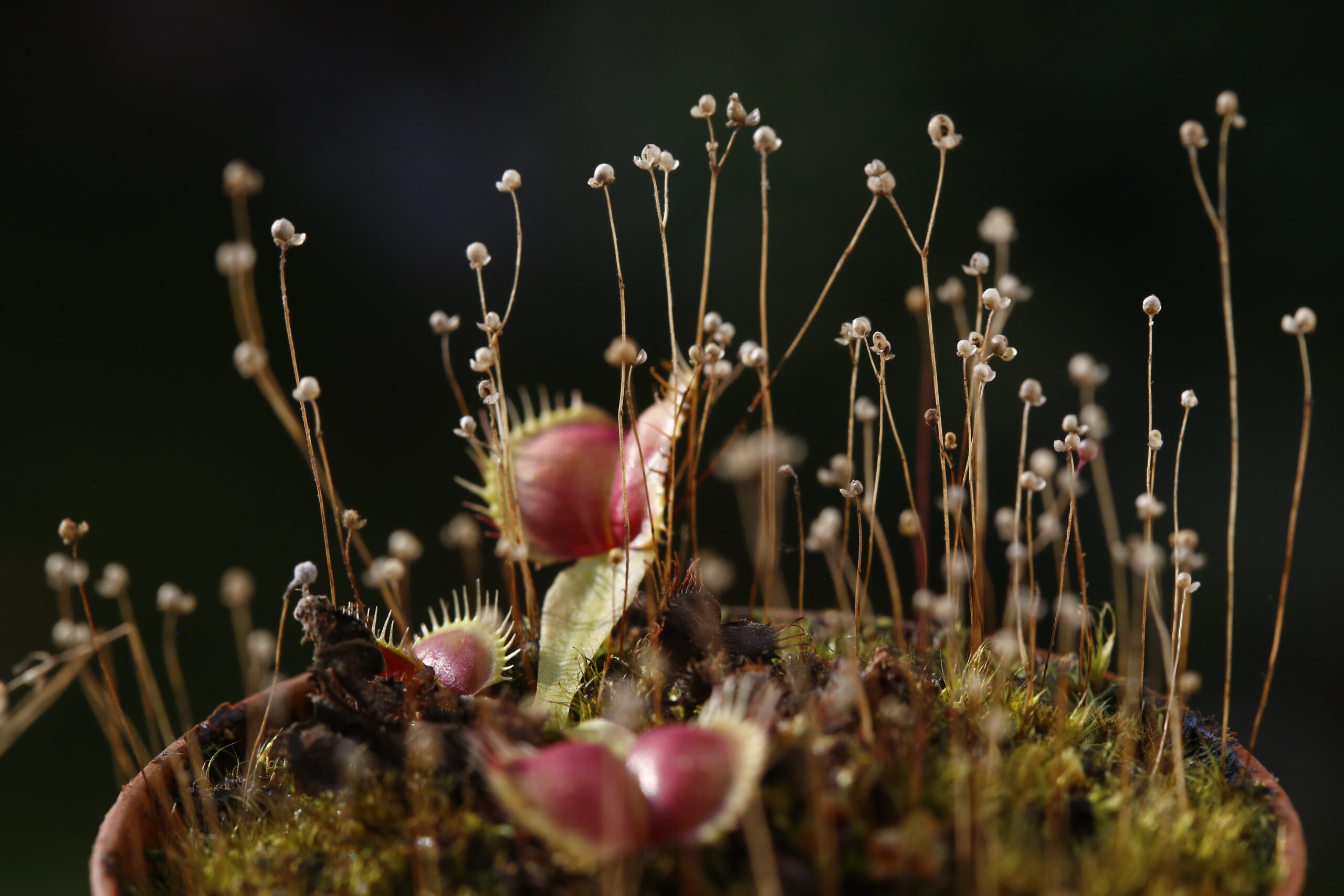
Botanical Curiosities and Scientific Relevance
Utricularia subulata has been used in several genetic and systematic studies. It belongs to the genus Utricularia, known for having some of the smallest genomes in the plant world. Some species in the group possess genomes so reduced that they approach those of certain bacteria, with an extremely dynamic gene architecture subject to mutations, transpositions, and genome duplication events.
In this context, the extraordinary phenotypic plasticity of Utricularia – its ability to take on different forms depending on environmental conditions – is considered one of the keys to its evolutionary success.
Furthermore, the peculiar loss of roots, a trait shared with its relatives Genlisea, is a perfect example of adaptation to nutrient-poor soils. The trapping of prey and the assimilation of organic substances have allowed these plants to replace traditional root absorption with a highly efficient carnivorous strategy.
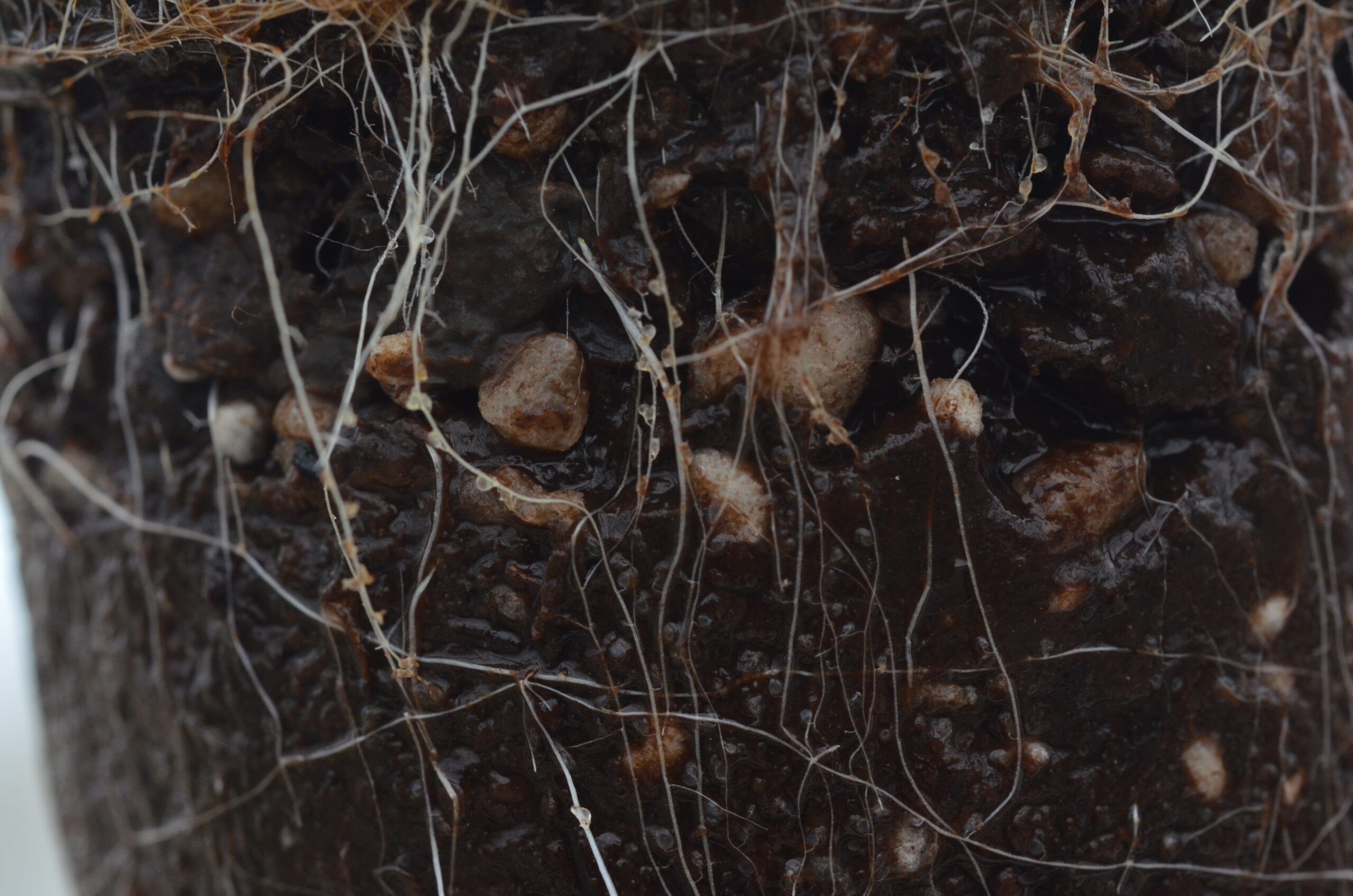
Conclusion: Foe or Resource
While Utricularia subulata is rightly feared by collectors for its invasive capabilities, it remains a fascinating species from a botanical, evolutionary, and ecological perspective. It’s one of the most widely distributed carnivorous plants globally, an adaptable pioneer that exploits every possible avenue to reproduce and spread.
For those who grow rare or display plants, its presence can be a problem, but for lovers of plant biodiversity, Utricularia subulata remains a small yellow marvel that still deserves respect.
Understanding its biology and behavior is the first step to coexisting with it – or to keeping it out of your pots.
